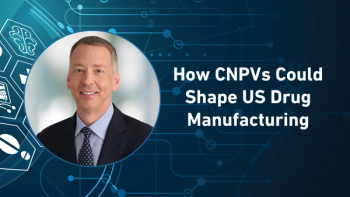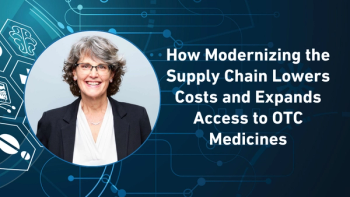Characteristics of a smart, 360° connected factory
- Integrated operations. Connecting information technology and operational technology systems allows for a fully automated and connected manufacturing environment.
- Real-time monitoring. Internet of Things sensors and artificial intelligence are used to monitor the production process in real-time, enabling quick adjustments and reducing downtime.
- Data-driven decision-making. Real-time data provides valuable insights that optimize processes, accelerate drug development, and ensure product quality.
Pharmaceutical manufacturers face mounting pressures—from the rapid pace of technological change to the complex manufacturing demands of today’s biologics and gene therapies. Staying competitive requires more than advanced equipment; it demands seamless connectivity across systems, processes, and people. A daily management system with 360° connectivity is the key to unlocking real-time insights, safeguarding institutional knowledge, and driving operational excellence and innovation.
What is 360° connectivity?
360° connectivity is the seamless integration of people, processes, and technology across the pharmaceutical manufacturing environment. This requires consolidating data from operational equipment, IT systems, and human operators into a centralized knowledge hub, enabling real-time visibility and streamlined decision-making at every level.
For pharmaceutical manufacturers, this level of connectivity breaks down information silos, enhances process transparency, and supports agile responses to production challenges.
In highly regulated environments, 360° connectivity enables faster problem resolution and better decision-making, improves product safety and compliance, and fosters continuous improvement across all elements of production.
At the heart of 360° connectivity are the critical links between people, machines, and data. These connections span four key areas—IT-to-machine; machine-to-machine; human-to-machine (and IT); and human-to-human—creating an integrated ecosystem that drives efficiency, agility, and innovation in pharmaceutical manufacturing.
- IT-to-machine connectivity: Seamlessly integrates enterprise information technology systems (such as enterprise resource planning, manufacturing execution systems, and laboratory information management systems) with operational technology such as manufacturing equipment, enabling smooth data flow for real-time monitoring, compliance tracking, and process optimization.
- Machine-to-machine connectivity: Facilitates direct communication between machines and sensors on the production floor, supporting automation, predictive maintenance, and efficient process control.
- Human-to-machine/human-to-IT connectivity: Empowers operators to interact with both equipment and IT systems, enhancing data input, system oversight, and operational decision-making based on real-time insights.
- Human-to-human connectivity: Enables effective collaboration across shifts, teams, and departments through centralized knowledge-sharing platforms, reducing information gaps, and preserving institutional knowledge.
The role of the daily plant process management system
At the heart of a 360° connected plant is a unified, real-time data, and communication system that seamlessly integrates every layer of the production ecosystem.
Without 360° connectivity, critical data remains siloed across different platforms—enterprise IT systems, production equipment, and operator logs—leading to inefficiencies, communication gaps, and missed opportunities for optimization.
360° connectivity enables:
- Aggregating and structuring data: Captures and consolidates machine-generated, IT-driven, and human-entered data into a unified system, ensuring real-time visibility across the plant.
- Facilitating collaboration: Bridges communication gaps by providing a single platform for shift handovers, action tracking, and knowledge sharing, reducing information loss.
- Enhancing decision-making: Delivers actionable insights by consolidating information, visualizing priorities across shifts, identifying anomalies even in unstructured data, and flagging priorities to ensure on-time-in-full.
- Ensuring compliance and traceability: Maintains accurate, time-stamped records of processes, supporting regulatory requirements and audit readiness.
- Optimizing operations: Enables predictive operations, workflow automation, and continuous process improvement, helping pharma manufacturers stay agile and competitive.
By enabling 360° connectivity, operational oversight, efficiency, and performance are enhanced significantly. Consider, for example, a biologics manufacturing facility where multiple processes often occur simultaneously across different zones, yet remain highly interdependent. Due to strict contamination control protocols, operators cannot freely move between areas without undergoing procedures, which limits direct communication.
Effective orchestration of tasks is, therefore, essential, particularly when steps are time-sensitive. For example, delays in downstream processing during harvest can significantly impact product yield. Any deviation in task timing, whether delayed or advanced, can be automatically communicated to relevant personnel through the system, ensuring visibility and enabling timely adjustments across operational zones.
Shift handovers are another common pain point in pharmaceutical production. Without a centralized system, critical information is often lost between teams, leading to inefficiencies and production delays. With a 360° connected plant, shift notes, maintenance reports, and real-time machine data are shared on an enterprise-wide platform. This ensures that the next shift has instant access to previous issues, ongoing work, and key performance insights—eliminating miscommunication and enabling proactive problem resolution.
Empowering human operators
While automation and digitalization have revolutionized manufacturing, people remain at the heart of operations—and they need the right tools to work smarter, not harder. 360° connectivity is more than linking machines and systems; it’s about breaking down silos and empowering human operators with real-time data, AI-driven insights, and centralized knowledge management.
One of the biggest barriers to efficiency in pharmaceutical plants is fragmented communication between shifts, departments, and organizational tiers. Operators and supervisors often rely on scattered shift notes, emails, or siloed data systems that don’t integrate with broader production insights. As a result, critical information—such as a recurring equipment issue or an adjustment made to a process—can get lost in transition, leading to inefficiencies, repeat failures, and wasted resources. With 360° connectivity, gaps are eliminated by creating a unified, digital knowledge hub where all stakeholders can access the same up-to-date information, no matter their role or shift.
Another critical benefit of 360° connectivity is its role to better capture and preserve institutional knowledge, especially for jobs where turnover is high. Long-time operators often accumulate invaluable tacit knowledge—insights gained through years of hands-on experience—but if that knowledge isn’t systematically documented, it disappears when they retire or move on.
A centralized knowledge management system, integrated within a connected enterprise platform, ensures that best practices, troubleshooting workflows, and process optimizations are captured in real-time. This not only safeguards critical expertise but also accelerates training for new employees, allowing them to ramp up faster and make informed decisions sooner.
In a smart, 360° connected factory, artificial intelligence (AI) supports day-to-day operations, transforming how production challenges are identified and resolved. When an operator encounters an issue, such as a deviation in viscosity or pH levels, AI tools can instantly surface similar past incidents, complete with root cause analyses and recommended solutions.
This accelerates troubleshooting and minimizes downtime.
For example, at a pharmaceutical plant producing sterile injectables, an operator noticed an improper signaling pH sensor. Using the factory’s AI-powered smart search, they quickly uncovered a similar incident from six months prior, including the root cause and the corrective action taken along with detailed steps. This allowed the team to resolve the issue quickly.
Beyond reactive support, orchestrated AI systems continuously analyze real-time data from equipment sensors, historical maintenance logs, and operator inputs. This enables early detection of anomalies, prediction of equipment failures, and alerts for potential compliance risks—long before they escalate into costly disruptions or regulatory breaches. By enabling proactive intervention, the smart factory ensures consistent product quality, regulatory adherence, and operational resilience.
Power meets compliance
By connecting people, processes, and AI-powered insights, 360° connectivity transforms pharmaceutical manufacturing into a more agile, efficient, and resilient operation—while maintaining strict quality and compliance.
In an increasingly competitive industry, companies that invest in empowering their workforce through digital connectivity will be the ones that stay ahead.
Embracing new challenges and opportunities, today’s pharmaceutical facilities are better positioned to evolve. This proactive approach also accelerates progress toward becoming an adaptive plant, as outlined in the BioPhorum Digital Plant Maturity Model1—no matter what your next stage may be.
About the Author
Andreas Eschbach is the founder and CEO of eschbach.
Reference
1. Digital Plant Maturity Model V3. BioPhorum. https://www.biophorum.com/download/digital-plant-maturity-model-3-0






